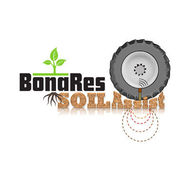Integrating Soil Compaction Impacts of Tramlines Into Soil Erosion Modelling: A Field-Scale Approach (2019.0)
Saggau , Kuhwald , Duttmann
Soil Systems, 3 (3), 51
doi:10.3390/soilsystems3030051
Abstract
Soil erosion by water is one of the main soil degradation processes worldwide, which leads to declines in natural soil fertility and productivity especially on arable land. Despite advances in soil erosion modelling, the effects of compacted tramlines are usually not considered. However, tramlines noticeably contribute to the amount of soil eroded inside a field. To quantify these effects we incorporated high-resolution spatial tramline data into modelling. For simulation, the process-based soil erosion model EROSION3D has been applied on different fields for a single rainfall event. To find a reasonable balance between computing time and prediction quality, different grid cell sizes (5, 1, and 0.5 m) were used and modelling results were compared against measured soil loss. We found that (i) grid-based models like E3D are able to integrate tramlines, (ii) the share of measured erosion between tramline and cultivated areas fits well with measurements for resolution ≤1 m, (iii) tramline erosion showed a high dependency to the slope angle and (iv) soil loss and runoff are generated quicker within tramlines during the event. The results indicate that the integration of tramlines in soil erosion modelling improves the spatial prediction accuracy, and therefore, can be important for soil conservation planning.